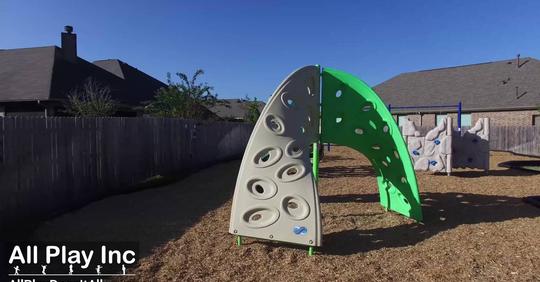Not all playgrounds are made equal when offering play possibilities for children of various physical and mental abilities. All guests may enjoy playing on a playground that is easily accessible. Universal Design, often called Design-for-All, is a crucial idea that must be maintained at the forefront of the decision-making process when creating an accessible playground. Nearly one in five people in the US have a disability, and 13% of public school students (or roughly 6.7 million kids) receive special services for ailments ranging from autism to hearing loss.
What is a playground that is accessible?
The use of playground equipment by children with and without disabilities is guaranteed by an accessible playground that complies with ADA rules. Additionally, it welcomes parents, carers, or disabled older siblings into the play area to watch the kids or join in on the fun.
Most new playgrounds must adhere to the accessibility criteria outlined in the Americans with Disabilities Act (ADA). They also demand compliance from renovated playgrounds already in place. A few playground ADA compliance requirements are:
- A playground must have open and unimpeded entry points to the playground and the connected play structures.
- Elevated play areas on the playground must have a minimum of 50% accessible routes.
- Specific safety surfaces that comply with ADA standards must be used on playgrounds.
What should an accessible playground comprise?
Accessible entrance points, seating, and play tables are needed. Play tables may be constructed on the ground or at a high elevation and were designed with play in mind.
Surface Routes
How visitors will move about the playground is one of the most crucial factors to consider when creating an accessible place. Elevated and ground routes make up the two primary categories of accessible travel. Accessible ground routes are routes created to allow people with impairments, such as those using wheelchairs or other mobility aids, access. These paths link every entrance and departure point for the playground’s accessible play equipment.
Transfer Methods
Children may raise themselves onto elevated play structures using transfer systems, leaving their mobility aid on the ground. For parking a mobility device on transfer platforms, there must be free floor or ground space. Support is also necessary at each level where transferring is the way of access since they help with general movement. Handrails and hand grips are two examples of support in an playground.
Musical Playground
Innovative musical aspects may improve inclusion in any setting. Since music is seen as a unifying language, it is not surprising that musical exploration-promoting instruments would find a place in inclusive parks and playgrounds. Your playground will become a popular destination for affordable family entertainment by offering a place where kids and adults can enjoy making noises together.
Bottom line
All Play’s playground equipment is of the finest quality, durability, and safety for kids of all abilities to enjoy it. We take pride in coming up with solutions and ensuring every child has a fair chance to grow and reach their full potential in an accessible playground. While providing everyone with unique, exhilarating, and unforgettable play experiences, we design and build our equipment to meet or exceed safety regulations.

